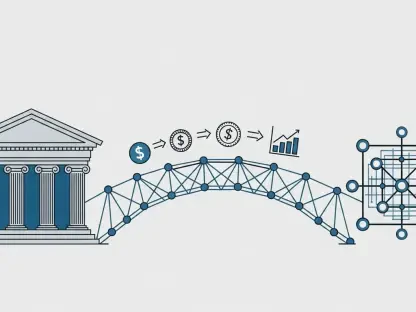Today, we’re thrilled to sit down with Kofi Ndaikate, a renowned expert in the fintech space with deep knowledge of blockchain, cryptocurrency, regulation, and policy. With cross-border payments becoming a cornerstone of global trade, Kofi offers invaluable insights into the rapid growth of this sector, the hurdles businesses face, and the strategies they can adopt to thrive in an interconnected economy. Our conversation explores the forces driving the expansion of international transactions, the operational and financial complexities involved, and the innovative approaches that are reshaping how companies manage these payments.
What are cross-border payments, and why have they become such a vital part of business operations in today’s world?
Cross-border payments are transactions that move money between countries, often involving different currencies, banking systems, and regulations. They’ve become essential because businesses of all sizes—whether huge corporations or small startups—are increasingly operating on a global scale. Sourcing goods, paying suppliers, or entering new markets all rely on these payments. Unlike domestic payments, which are usually straightforward, cross-border transactions come with added layers like foreign exchange rates and compliance rules, making them more complex but also more critical as international trade grows.
What’s fueling the explosive growth in cross-border payments, especially with projections showing massive revenue increases by 2030?
Several factors are driving this boom. Globalization is a big one—businesses are expanding into new regions, and e-commerce has made it easier for even small companies to sell worldwide. Then there’s the rise of digital payment systems and innovations like real-time processing and ISO 20022 standards, which make transactions faster and more reliable. Specific industries like tech and manufacturing, along with regions like Asia-Pacific, are leading the charge due to their high trade volumes. It’s a perfect storm of demand and technology coming together.
Can you break down the operational challenges businesses face when dealing with cross-border payments?
Operationally, cross-border payments can be a nightmare for many companies. The process often requires detailed information—like purpose-of-payment codes or specific bank identifiers—that isn’t needed for domestic transfers. If any of that data is missing or wrong, payments get delayed or rejected outright. On top of that, the lack of standardization across countries means low straight-through processing rates, where only a fraction of payments go through without manual intervention. This creates inefficiencies, drives up costs, and frustrates everyone involved.
On the financial side, why is managing multiple local bank accounts such a burden for treasury teams?
Holding local bank accounts in different countries might seem like a solution for making payments in local currencies, but it’s a headache for treasury teams. They have to reconcile and fund each account separately, often keeping cash in currencies that earn little to no interest—or worse, lose value. This ties up capital and creates inefficiencies, especially as a business scales into more markets. Plus, fluctuating exchange rates can erode profits if not managed carefully, impacting the company’s bottom line in ways that aren’t always obvious at first glance.
Transparency is often cited as a major issue. Why is it so difficult for businesses to track the status of their international payments?
Unlike domestic payments, where you can usually predict timelines, cross-border transactions often happen in a black box. Businesses don’t always know where their money is in the process—whether it’s been sent, received, or stuck somewhere in between. This lack of visibility comes from fragmented systems across borders and varying levels of tech adoption by banks. It strains relationships with suppliers, who might not get paid on time, and it makes planning harder when you can’t predict cash flow accurately.
One of the best practices for managing these payments is evaluating both payables and receivables in a market. Can you explain why this approach makes sense?
Looking at both what you owe and what you’re owed in a specific market gives you a clearer picture of your financial needs. For example, if you’re paying suppliers in euros but not earning revenue in euros, opening a local account might not be worth the cost. Instead, you can centralize your cash in your main currency, like US dollars, and use payment solutions that tap into local systems without extra accounts. This cuts down on overhead and helps you avoid unnecessary currency conversion fees, saving money in the long run.
How can negotiating with suppliers in their local currency benefit businesses compared to sticking with US dollars?
Paying in a supplier’s local currency can build trust and often save money. When you invoice in US dollars, suppliers might pad their prices to hedge against exchange rate swings, so you end up overpaying without realizing it. By negotiating in their currency and getting dual-currency invoices, you can compare costs and make smarter decisions. It also shows suppliers you’re willing to meet them halfway, which can strengthen partnerships and lead to better terms over time.
What’s your forecast for the future of cross-border payments, especially with the rise of new technologies and solutions?
I’m optimistic about where cross-border payments are headed. With fintech innovations and tools like blockchain for faster settlements, real-time payment networks, and enhanced tracking systems, we’re moving toward a world where international transactions are as seamless as domestic ones. I expect costs to drop and transparency to improve significantly over the next decade, especially as more businesses adopt automated treasury systems. The challenge will be ensuring regulations keep pace with tech advancements, but overall, the future looks bright for global trade.









